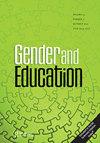“我会穿着校服”:街头骚扰的非正式课程
IF 1.9
3区 教育学
Q2 EDUCATION & EDUCATIONAL RESEARCH
引用次数: 1
摘要
越来越多的文献记录了校园骚扰和街头骚扰的普遍发生。然而,迄今为止,很少有人关注与学校有关的街头骚扰事件,比如穿着校服上下学。在这篇文章中,我们的目标是通过探索对澳大利亚经历过街头和公共骚扰的个人进行的47次定性访谈的结果来解决这一差距。街头骚扰通常是在参与者穿着校服时遇到的,而开始上高中往往与街头骚扰的开始或强度增加有关。根据福柯的纪律权力概念和女性主义具体化理论,我们认为街头骚扰——以及学校对这种骚扰的反应——作为一种“非正式课程”发挥作用,使骚扰的发生正常化,并使年轻人的身体成为风险场所,需要通过参与安全工作进行监视、控制和仔细管理。本文章由计算机程序翻译,如有差异,请以英文原文为准。
‘I’d be in my school uniform’: the informal curriculum of street harassment
ABSTRACT A growing body of literature has documented the pervasive occurrence of harassment in schools, and street-based harassment. However, to date there has been little attention to street-based harassment occurring in school-related contexts, such as walking to and from school in uniform. In this article, we aim to address this gap by exploring findings from 47 qualitative interviews with individuals who have experienced street and public harassment in Australia. Street harassment was commonly encountered by participants while they were in their school uniform, and beginning high school was often associated with the onset or increased intensity of street harassment. Drawing on Foucault’s concept of disciplinary power and feminist theorisation on embodiment, we argue that street harassment – and school responses to this harassment – functioned as an ‘informal curriculum’ that normalized the occurrence of harassment and produced young people’s bodies as sites of risk that required surveillance, control, and careful management through engagement in safety work.
求助全文
通过发布文献求助,成功后即可免费获取论文全文。
去求助
来源期刊

Gender and Education
EDUCATION & EDUCATIONAL RESEARCH-
CiteScore
5.20
自引率
9.10%
发文量
31
期刊介绍:
Gender and Education grew out of feminist politics and a social justice agenda and is committed to developing multi-disciplinary and critical discussions of gender and education. The journal is particularly interested in the place of gender in relation to other key differences and seeks to further feminist knowledge, philosophies, theory, action and debate. The Editors are actively committed to making the journal an interactive platform that includes global perspectives on education, gender and culture. Submissions to the journal should examine and theorize the interrelated experiences of gendered subjects including women, girls, men, boys, and gender-diverse individuals. Papers should consider how gender shapes and is shaped by other social, cultural, discursive, affective and material dimensions of difference. Gender and Education expects articles to engage in feminist debate, to draw upon a range of theoretical frameworks and to go beyond simple descriptions. Education is interpreted in a broad sense to cover both formal and informal aspects, including pre-school, primary, and secondary education; families and youth cultures inside and outside schools; adult, community, further and higher education; vocational education and training; media education; and parental education.
 求助内容:
求助内容: 应助结果提醒方式:
应助结果提醒方式:


